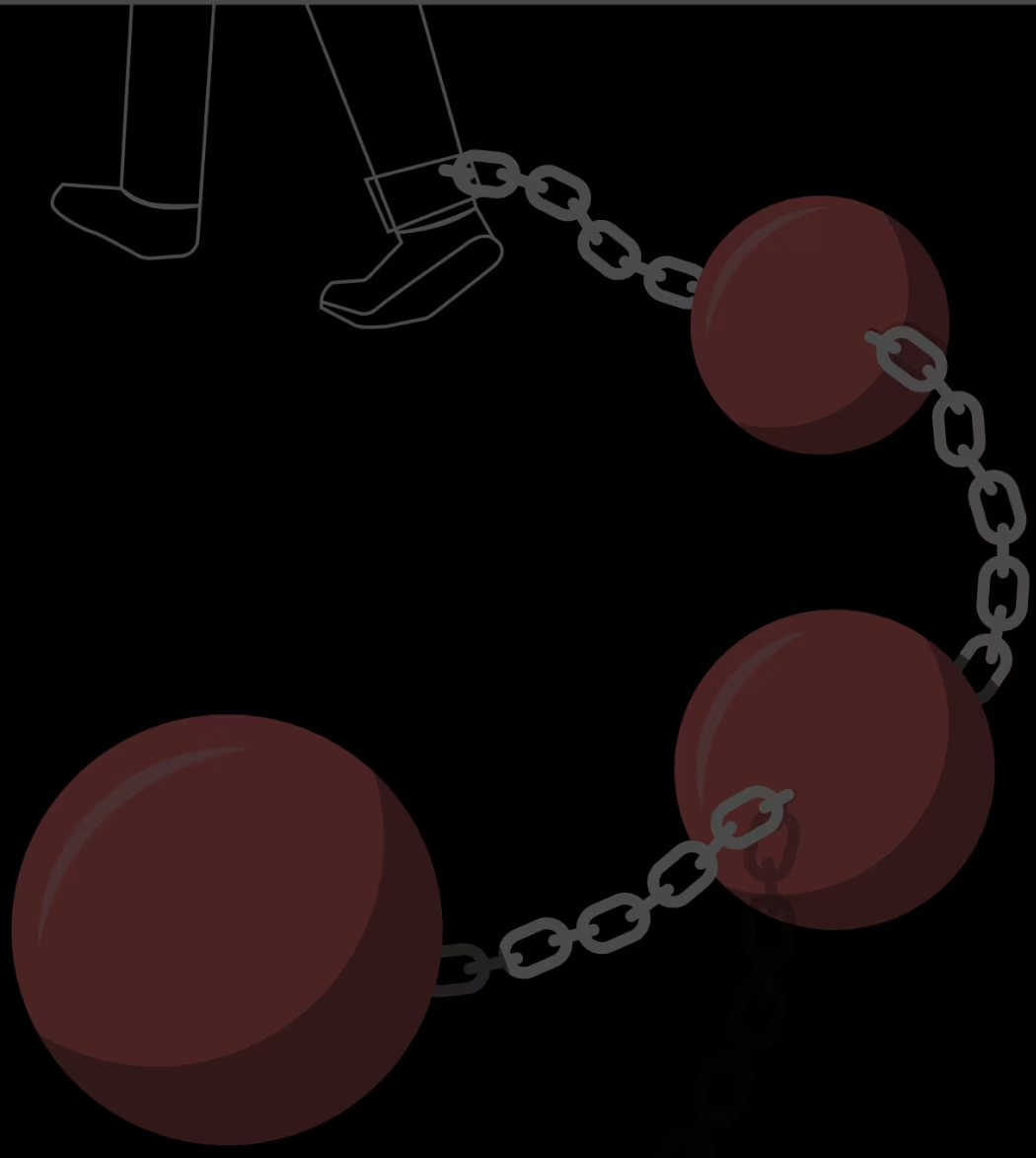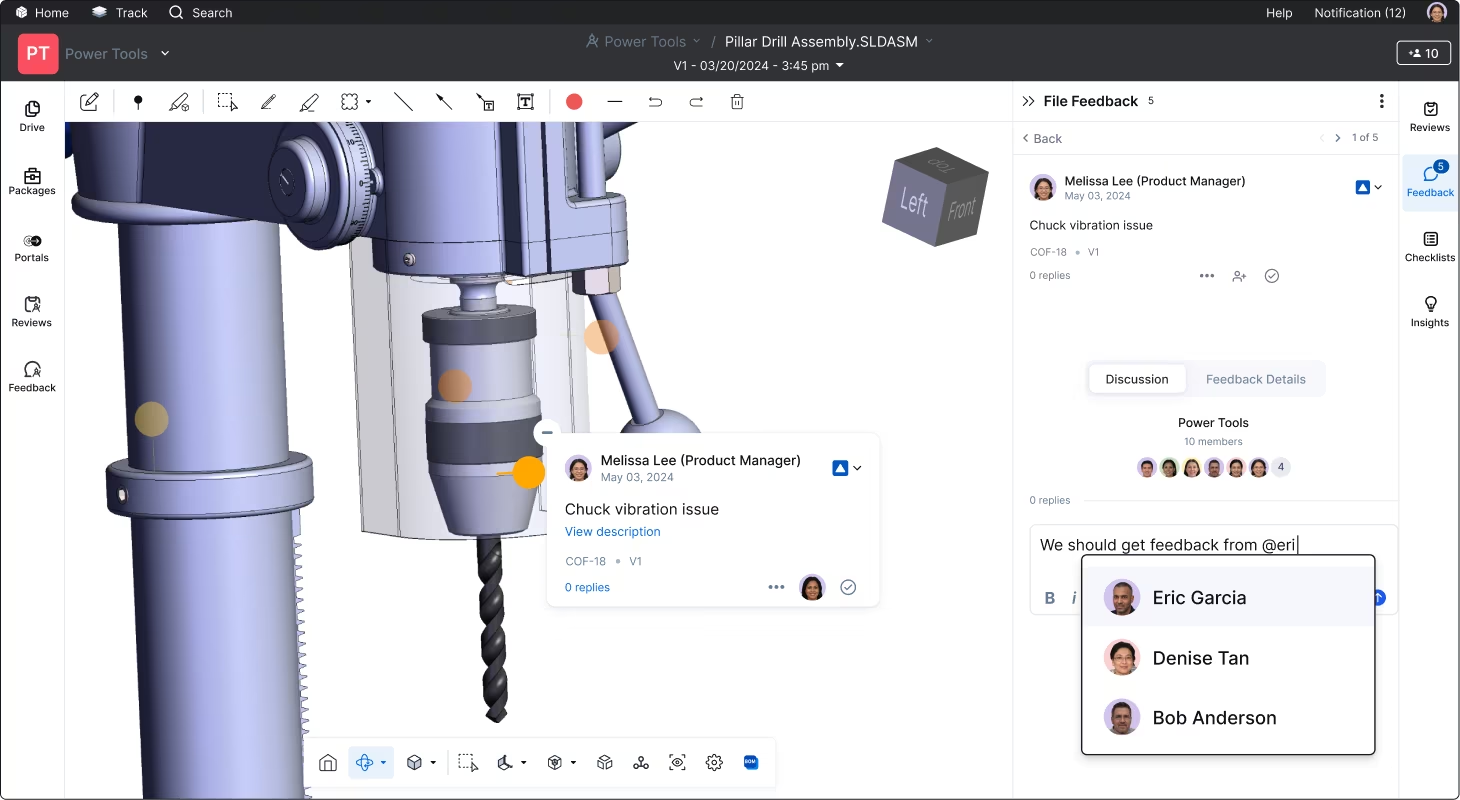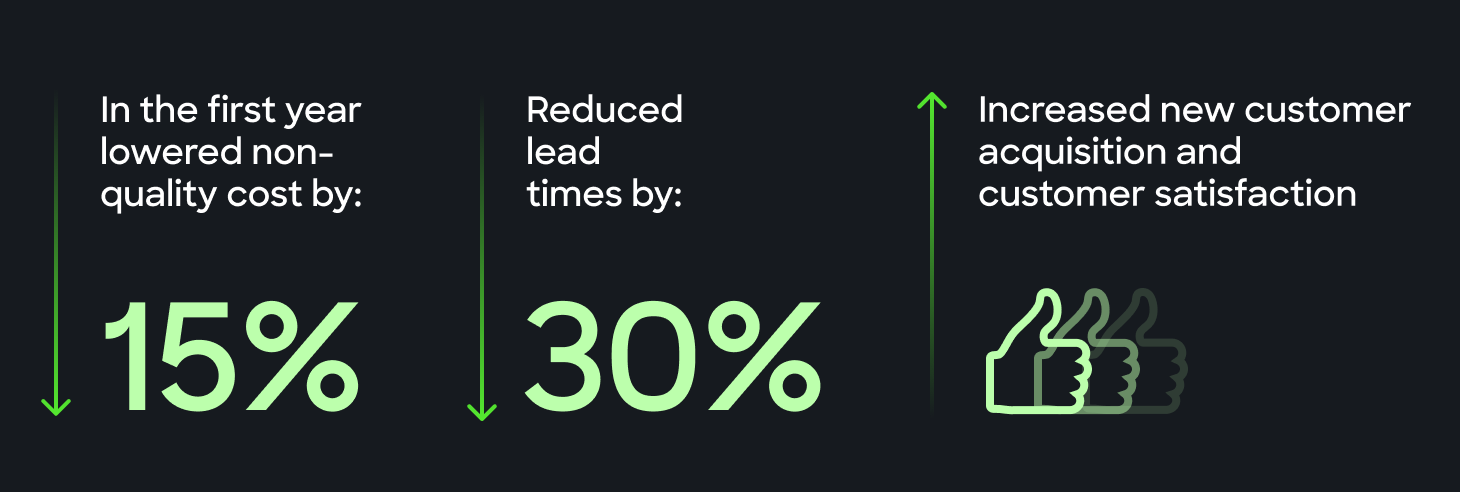Design reviews have not kept pace with engineering innovation


Reviewing designs should be as productive as developing the product itself
Automotive EV programs want new vehicles in the market in half the time. SpaceX sent more satellites into orbit in the last 5 years than all previous years combined. Medical device manufacturing facilities are expanding faster than ever to keep up with growing demand.
It’s not news to anyone in engineering that the mounting pressure to launch the highest quality product into the market as fast as possible is only rising.
Yet, engineering teams continue to struggle through the same early product development issues they suffered 5, 10, 15+ years ago:
And because of all these issues, engineering teams brute force product development processes.
So, while the team may meet the required stage gate timeline, the approved design has known errors. These known errors crop up in production:

But, it doesn’t have to be this way.
The solution is simple, but it’s not easy: you need to innovate how you review designs – starting from square one 🧠

Better design review starts with better tools + better processes
If we look at the problems engineering teams face in early product development, it boils down to two key gaps:
- Bad processes (or, no processes at all)
- Wrong tools
If we look at the other tools engineering teams use in product development, they work for what they’re intended to do. Engineers have CAD for product design and PLM for product data and record-keeping. The systems and processes built around these tools work for designing products and housing product data.
Yet, when it comes to interacting with people during product development – no dedicated tool, no dedicated processes. So teams lean on meetings, emails, spreadsheets and PowerPoint to conduct and track design reviews.
Instead what teams need is a purpose-built tool for bringing people, designs and data together when reviewing designs.
A tool that:
- Lets anyone access CAD or 2D drawings to review
- Allows reviewers to manipulate models and add feedback in the context of that model
- Automatically creates an issues list as people leave feedback
- Updates file versions with every upload, so everyone has the most up-to-date design
- Syncs with your CAD and PLM to create a seamless technology experience
Then, this tool should be paired with a minimum viable review process.
For teams just starting to build a standardized design review process, the simplest process is the best process. This starts with identifying the top 3-5 problems your team struggles with today.


How a Hyundai Mobis overhauled their design review process starting with a better tool
For Hyundai Mobis (a Tier 2 supplier for companies like Fiat Chrysler), this was:

So, they searched for a tool that could help them address these three major problems and then formed a process around that solution. Not alone, of course, but with the help of their technology partner.
For Hyundai Mobis and other companies in manufacturing, that tool and technology partner is CoLab.
“Doing the upload to CoLab — I can see that model, play with it, look at it, anytime I want. Not just at the office, but also externally. So that was a very critical thing for us. The issues and the reviews we created on our files were key for our tech review when we were bidding for the program. Fiat Chrysler Automotive really liked being able to see the model on screen and being able to move it around.”- Hak Park, Engineering Manager, Hyundai Mobis
The best engineering teams launch products faster with CoLab
Companies like Ford, Komatsu, Schaeffler and Schneider Electric use CoLab as their better tool for design reviews.
With CoLab these teams have completely revolutionized the way they do design reviews. No more struggling through the same problems with bad processes and the wrong tools for the job. With CoLab, these teams do design reviews differently.
“Now the converters can see the vehicle sooner, so they can get Ford products into the market quicker and help us be more competitive as a company. It’s a massive increase in speed. Any time of the day, across time zones, they can access CoLab and have their reviews.”- Andrew Walden, Ford Pro Special Vehicles Senior Project Engineer
And the results speak for themselves.
The companies that use CoLab see:


Get your design reviews out of 1999 and into 2025
Your team’s product development challenges might look different than another engineering team. But, the common thread is this: the best engineering teams want to solve the root cause of design review problems. And innovate in all areas of hardware development.
So, let’s talk about it.
With a design review consultation, you’ll talk with a CoLab team member about:
- Your team’s design review challenges
- Where the gaps in your design review process are
- Whether CoLab can address those gaps



